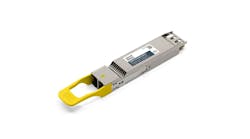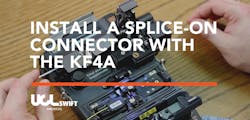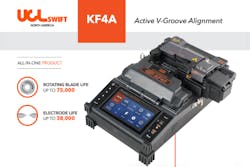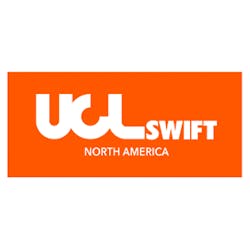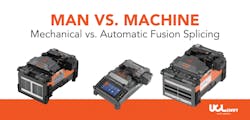2024 Forecast: Disasters Coming!
In the Shadow of Shannon
Termination of a Splice-On Connector Using the Swift KF4A Fusion Splicer
Install a Splice-On Connector with the KF4A
The Swift KF4A is a highly advanced, All-In-One active cladding alignment fusion splicer, designed to perform the major five functions systematically: stripping, cleaning, cleaving, splicing and protecting. The Swift KF4A is the best fit for fusion splicing and fusion splice-on Connectors (SOC) of FTTx network applications. It eliminates fatal issues common with conventional mechanical connectors including low quality, weak durability and high maintenance costs. The Swift KF4A fusion splicer coupled with Swift fusion splice-on connectors provides customers the best ROI.
In this video, Pete Delaurier, vice president of enterprise sales at UCL Swift North America, demonstrates how to install a splice-on connector on the KF4A All-In-One active clad fusion splicer. Follow along with the steps below.
- First, turn your machine on. Install your back boot onto your fiber and then your heat shrink tube. Then, place your fiber in the corresponding holder, leaving a 1-inch tail. Turn your automatic thermal stripper on, open it, insert your holder and then close your doors. At this point, the KF4A has stripped off all of the outer coating, including the acolyte.
- Clean your fiber. Then, place it in your cleaver. Close your trash bin receptacle door and cleave. Next, insert your fiber into the splicer. For your connector, use the corresponding connector holder. Open your door, place your connector inside of the holder and close your door. Place inside your stripper and close your doors. Again, open the left door first. Remove your holder, clean, place inside your cleaver, close your door and cleave.
- Place your fiber into your splicer and close your wind cover. At this point, the KF4A will begin an alignment. It will pause, allowing you to make adjustments if needed. Once you’re ready to arc, press the play button. Once the arc is complete, open your wind cover and allow the splicer to perform a tensile test. It’s a two-newton pull-force across the fiber. That means the pressure is sitting on your fiber until you release it by opening the doors. Open both of your doors, remove your connector and allow it to hang.
- Bring up your heat shrink to the base of your connector. Open the oven, place the connector inside the oven and turn the oven on. This heating process takes approximately 30 seconds. When complete, open your oven, remove your connector and place it inside your cooling tray. Allow your connector to cool for 10 seconds.
- Once cooled, bring your back boot up and assemble it onto your connector. Then, place your top shell. Your connector is now complete!
UCL Swift (formerly America Ilsintech), is a nationwide provider of performance-engineered fiber optic components. With over 20 years of proven manufacturing capabilities, UCL Swift delivers patented All-In-One functionality with Swift fusion splicers that integrate thermal stripping, cleaving, cleaning, splicing and protecting into a single unit. This comprehensive approach to fiber terminations consistently delivers reliable connections, reduced installation time, and high precision splices.
Additionally, UCL Swift delivers connectors, factory terminated and tested cable assemblies, and enclosures that provide cleaner connections and superior optical performance — ideal for FTTH, data center and campus environments. Discover how All-In-One functionality can provide quicker installs, reduced downtime, easier redundancy channels and reliable connection performance.
For more information, visit UCLSwiftNA.com
More Splicing Technology from UCL Swift:
Webinar Rewind: Fiber Optic Solutions for Your Transitioning Workforce
Benefits of specifying and installing fiber optic networks, and how to get your workforce educated and working faster and more efficiently.
Video: All-In-One Fiber Splicers: 5 Functions, 1 Machine
When it comes to ensuring that your fiber network can provide superior performance, utilizing fusion splicing offers many distinct advantages over mechanical splicing. Keep up to date with the latest innovations.




